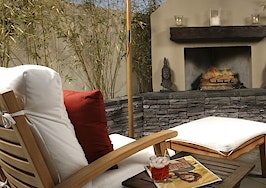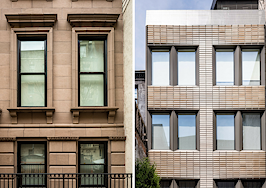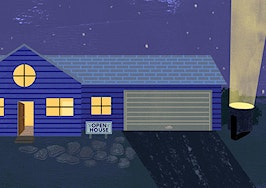HGTV, be prepared to mourn — all those sweeping shots of large kitchens adorned with granite countertops, high-shine finishes, commercial grade appliances, and of course, the ubiquitous kitchen island may soon be a relic of the past, along with formal living and dining rooms.
In June, investment bank UBS published an 82-page report grimly titled “Is the kitchen dead?” where UBS argued that a 20 percent increase in online food ordering sales (e.g., Uber Eats, Postmates, Grubhub) by 2030 could eliminate the need for a kitchen.
“There could be a scenario whereby 2030 most meals currently cooked at home are instead ordered online and delivered from either restaurants or central kitchens,” the report read, while noting that millennials are three times as likely to use these services.
“The expertise currently resides in-house (to cook, as it once did to produce a pair of trousers) could potentially be rendered immaterial, or the expertise might shrink to preparing breakfast or cups of tea, much like sewing has arguably shrunk to basic clothing repairs carried out at home … We could be at the first stage of industrializing meal production and delivery.”
HomeAdvisor smart home strategist and home expert Dan DiClerico told Inman there’s no need to worry about kitchens disappearing, and there’s still plenty of interest in the vast, open-concept layouts that have captured homebuyers’ imaginations over the past 20 years. But, DiClerico said there is a budding movement toward smaller kitchens among millennials.

Would this be enough space for you? | Photo credit: chuttersnap on Unsplash
“We are seeing the pendulum start to swing,” he said. “There’s always going to be a space for [large kitchens], but the younger buyer, the millennial who gets his or her meals from delivery services, they’re going to be less interested in that and be more focused on other areas of the house. I think you’re onto something, but it’s the early days.”
DiClerico said appliance makers at February’s NAHB International Builders Show debuted compact stoves and refrigerators as small as 18-inches wide.
“As the market has rebounded, we’ve seen smaller starter homes being built,” he added. “There’s a different distribution of space in the home that provides the option for a smaller or separate kitchen.”
Former interior designer and current Coldwell Banker Brokers of the Valley Realtor Irina Grinevich says UBS’s study may ring true in specific markets, but buyers in her Napa Valley market still want large kitchens.
“In fact, buyers of all ages prefer a larger kitchen mainly for entertaining,” Grinevich said. “The kitchen is the focal point of the house, and sometimes it can be a transaction deal breaker.”
“The latest trends in kitchen design are following homeowners’ demands and are constantly changing,” she added. “Current trends include large multipurpose islands, which have become the focal point of the kitchen. In many cases, these large islands have replaced dining tables.”
Although kitchens seem to be safe for now, formal living and dining rooms are on the way out, as described in a compelling op-ed for Curbed by McMansion Hell creator Kate Wagner.
Wagner said it’s important for buyers, builders and renters to be able to discern a need versus a want.
“‘Entertaining space,'” as it is marketed by builders, Realtors, media and popular culture, is, more often than not, a want that has been rationalized and internalized, and thus feels like a need,” Wagner wrote.
“But now that science proves that nobody uses their formal living and dining spaces, it’s time for us to sit down and have a struggle session with ‘space for entertaining,’” she added.
DiClerico and Grinevich agreed on the declining demand for formal rooms, saying that buyers want multifunctional rooms.

An example of a multifunctional room | Photo courtesy of Andersen
“Again, in general, it’s about having to do more with less, so the formal room, for example, has given way to flex spaces, also known as bonus rooms,” DiClerico said. “These spaces don’t have a single, dedicated purpose the way a living room or formal dining room used to have.”
“I certainly see formal living and dining rooms going out of style,” Grinevich said. “We see high demand for multi-purpose spaces with an open floor plan where the kitchen, living and dining areas are combined into a single space. Formal dining rooms sometimes are refurbished into a den for media and entertainment.”









